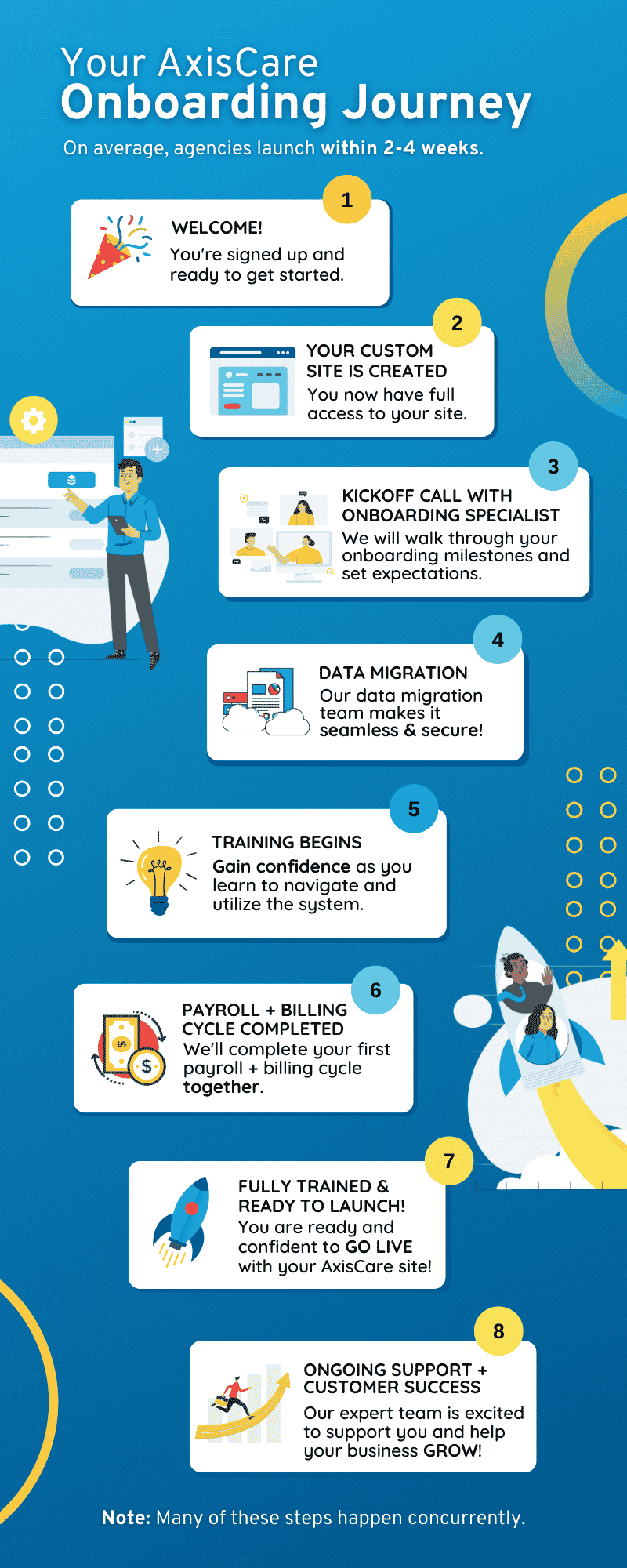Home care agencies and their schedules are pivotal pieces to the care delivery puzzle. A well-trained and seasoned scheduler can be the catalyst for an agency’s growth and success, but they may be causing ripples in your retention efforts without even realizing it.
Traditional pen-and-paper scheduling methods often inadvertently foster scheduling biases that can lead to frustration from your caregivers and an increase in turnover. However, the use of home care scheduling software offers a reliable solution to this often-overlooked action. By leveraging technology, agencies and their schedulers can create more balanced and equitable schedules, leading to a more positive work environment that increases caregiver retention.
Underlying Scheduling Bias – A Silent Struggle
Scheduling bias occurs when certain caregivers receive more favorable schedules, clients, and hours, while others consistently end up with less desirable shifts. This can happen due to several reasons: unconscious biases of the scheduler, a lax approach to shift allocation, or even favoritism. Regardless of the cause, the outcome is often the same—some caregivers feel undervalued or overworked, leading to job dissatisfaction and churn.
Manual scheduling by a human versus software scheduling can inadvertently make scheduling decisions based on subjective criteria rather than objective needs and availability. This can lead to uneven distribution of work, causing burnout among some caregivers while others experience underutilization. Both situations are not favorable to retention efforts, not only because they affect the well-being of caregivers but also because they can lead to decreased quality of care for clients.
Alleviate Bias With Home Care Scheduling Software
Caregiver scheduling software utilizes algorithms, attributes, and data to allocate shifts fairly and objectively. These systems consider a range of factors, including caregiver availability, skills, client needs, geographical considerations, and even preferences such as allergies when scheduling. By taking a data-driven approach, the software ensures that decisions are made based on consistent criteria, reducing the likelihood of bias.
Additionally, home care scheduling software offers features such as automated scheduling, which minimizes human error and subjective decision-making. With automation and the ability to plan ahead, the focus shifts to meeting the needs of both caregivers and clients efficiently. The transparency provided by the software also ensures that all caregivers have equal access to available shifts, fostering a sense of fairness.
Features that Promote Fair Scheduling
Robust home care software often includes features designed to promote balanced and fair distribution of shifts. Here are a few examples:
- Advanced Matching Algorithms: Match caregivers with clients based on compatibility, skills, attributes, and availability, rather than gut decision or personal intuition.
- Real-time Updates: Caregivers can receive real-time notifications within caregiver mobile apps about available shifts, schedule changes, and other important updates, ensuring they are always in the loop.
- Distribution Tracking: Software can monitor and report on the equity of shift allocations, providing insights into how shifts are distributed across the workforce while considering preferred work hours set by caregivers.
By incorporating these features, scheduling software not only helps in creating fair schedules but also empowers caregivers by giving them more control over their work life balance.
Enhancing Caregiver Job Satisfaction & Retention
A recent third-party study commissioned by AxisCare revealed that 46% of respondents view caregiver retention as the largest hindrance to agency growth over the next five years, which comes as no surprise. When looking at the impact and correlation between scheduling and retention, there’s a clear tie between balanced and fair schedules and job satisfaction. Caregivers are more likely to feel valued and appreciated when they see that both their financial and emotional needs are considered in their schedules. High job satisfaction is correlated with increased retention rates, as employees who are happy in their roles are less likely to seek employment elsewhere.
Not to mention, fair scheduling reduces burnout. When the workload is distributed evenly, caregivers can maintain a healthy work-life balance. This is particularly important in the home care industry, where the emotional and physical demands of the job can be taxing. By ensuring caregivers are not overburdened, scheduling software contributes to their long-term well-being and job satisfaction.
Building Trust Through Transparency
Trust is a critical component in any workplace, and transparent scheduling practices help build this trust between caregivers and office staff in an agency setting. Home care scheduling software allows caregivers to see how and why their schedules are created, which fosters a culture of openness and honesty. When caregivers understand the factors driving their schedules and assigned visits, they are more likely to trust the system and feel assured that they are being treated fairly.
Additionally, transparency in scheduling can facilitate better communication between caregivers and administration. Open lines of communication ensure that any issues or concerns can be addressed promptly, further contributing to a positive work environment.
Case Study: Improved Retention Through Scheduling Software
By leveraging AxisCare’s home care software and scheduling features, Family Resource Home Care has seen a significant increase in shift count hours per week and their caregiver census. By empowering caregivers to take charge of their own workload and schedules with Preferred Work Hours within AxisCare, Family Resource Home Care saw a record-breaking hours billed for the company. Now, 88% of their caregivers receive more than 70% of their Preferred Work Hours, leading to an increase in caregiver retention, with the average caregiver staying in their role longer than 90 days.
The Long-term Impact on Home Care Agencies
Although the largest hurdle facing the industry is retention, the benefits of using home care scheduling software extend far beyond that. When using home care software equipped with scheduling features, agencies can experience overall organizational improvements, including:
- Optimized Resource Utilization: By efficiently matching caregivers to client needs, the software ensures that resources are maximized and used effectively.
- Increased Client Satisfaction: Clients receive consistent and high-quality care when caregivers are well-matched based on preferences, skill levels, and more. Not to mention consistency and familiarity with a long-term caregiver when the burden of retention is alleviated.
- Streamlined Operations: Automated scheduling saves time and reduces administrative burdens, allowing staff to focus on more strategic tasks.
Tackle Caregiver Retention & Schedule Fairly With AxisCare
Home care scheduling software is a valuable tool that can significantly reduce scheduling bias and enhance caregiver retention. By offering fair, transparent, and efficient scheduling, home care management software can contribute to a supportive and productive work environment. Schedule a demo of AxisCare to see how we can help you have happier caregivers, improved client outcomes, and streamlined operations.









